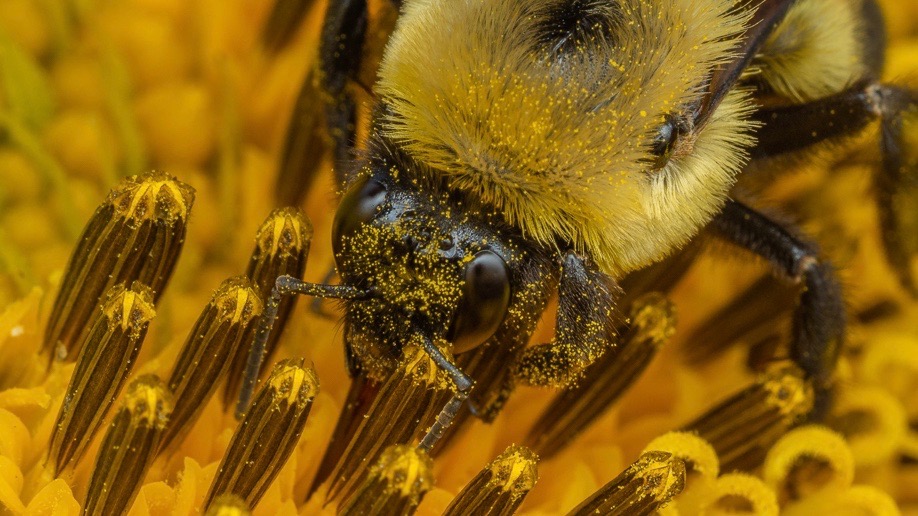Scientific Name: Bombus griseocollis
Common Name: Brown-belted Bumblebee
Family: Apidae
Species Range: Widely distributed throughout the US, including the Pacific Northwest, the Great Plains, the South, and the East coast. These bees are found in rural and urban areas alike.
Identification Tips: B. griseocollis are big ol’ bumble bees! Queens can reach around 22mm in length, while workers vary from 9mm to 18mm. Males can reach up to 15mm long. These bees have dark heads, yellow thoraxes, and mostly black abdomens with a small brown patch on the tergum, hence their name. Their hair is short and even across their bodies.

Nesting Habits: Mated queens emerge in early spring to begin the hunt for a suitable nesting site, which is most commonly underground - although they will occasionally nest above ground. Queens will rear a small colony of around 50 individuals. These bumblebees tend to be a little more defensive of their nest sites than other species. Drones are reared in summer to mate with newly emerged queens from neighboring colonies. At the end of the season, the colony and any remaining drones will die out, leaving only newly mated queens to overwinter.
Preferred Forage: Brown-belted bumble bees are generalist feeders, and will be happy in any area rich in flower diversity.
Active Season: B. griseocollis queens are one of the first to emerge in early Spring, and colonies are active into late summer.
Fun Fact: Unlike the drones of other eusocial species, young male B. griseocollis actually assist their sisters in incubating pupae!
